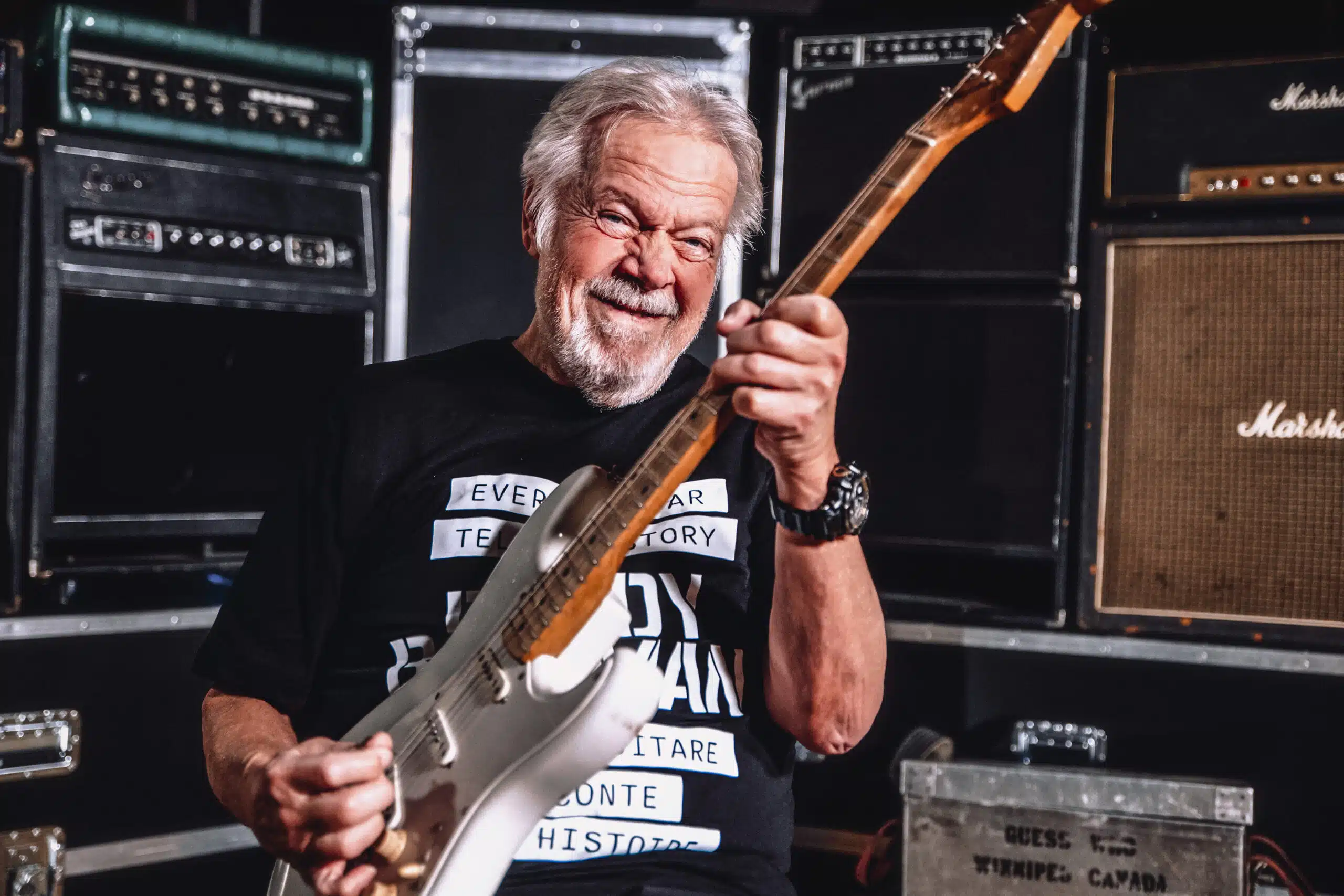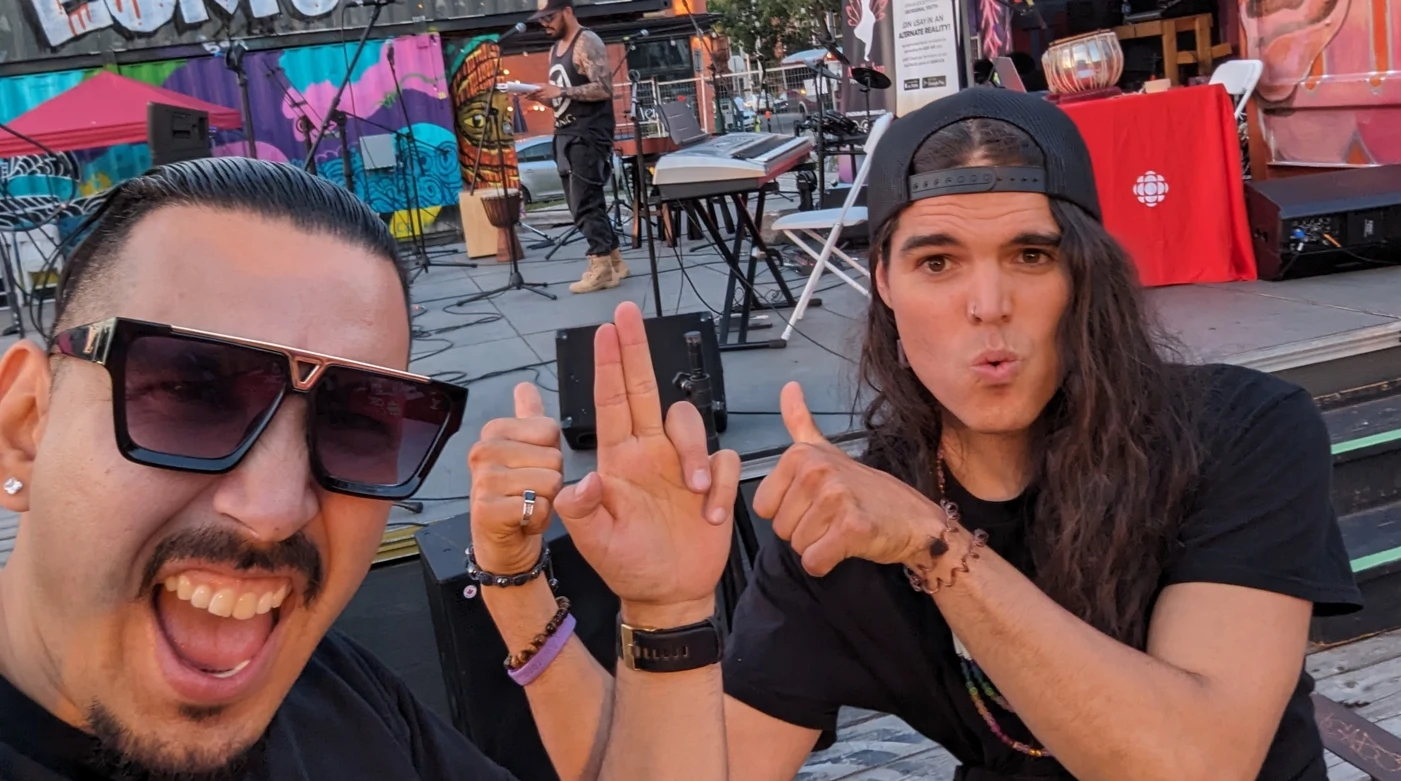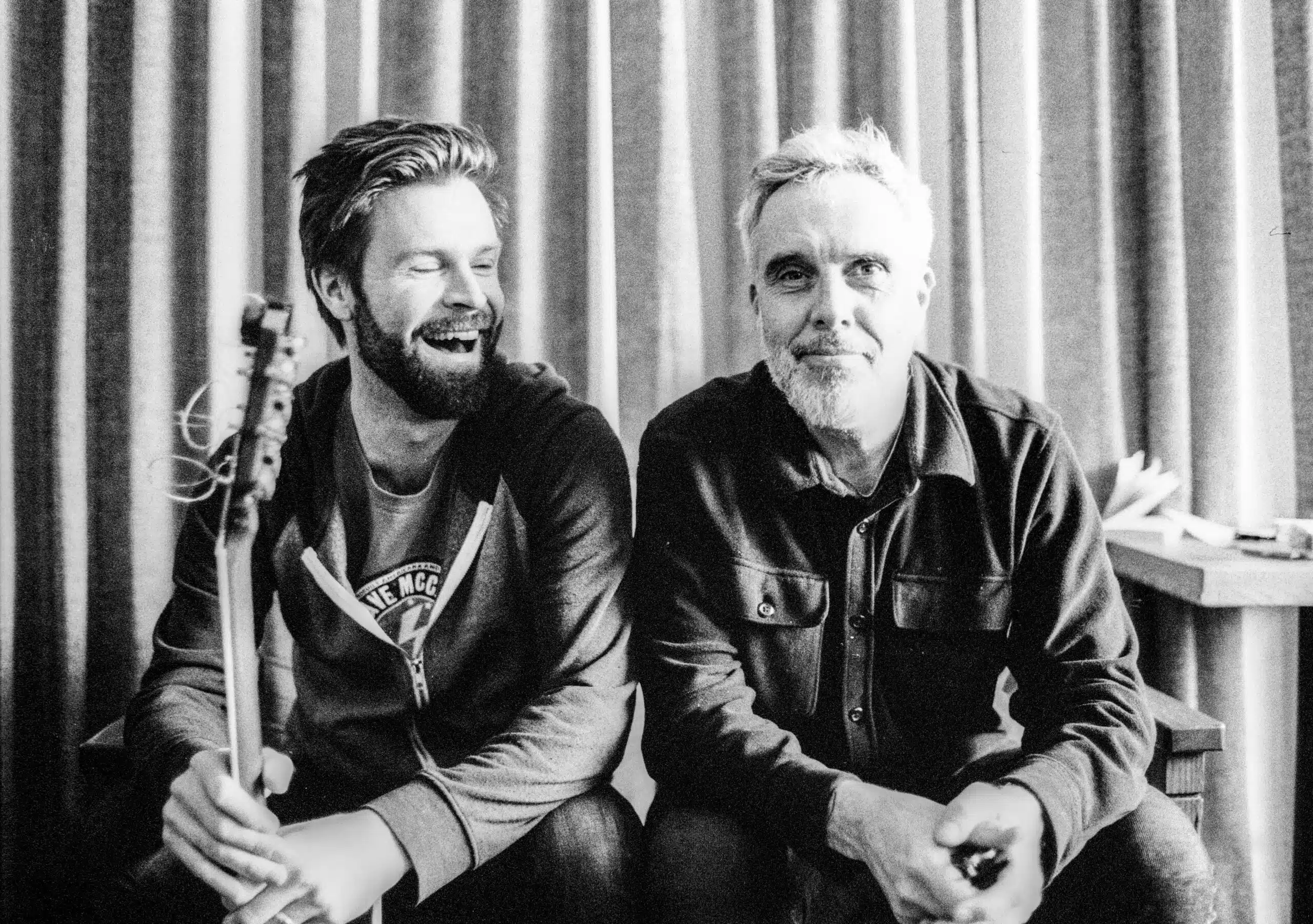Dopamine rushes. Remember the bliss they gave you as a teenager when you cruised around with friends, listening to your favourite music and then talking about said music when not listening to it? A conversation with songwriter, singer, guitarist and broadcaster Randy Bachman is like reliving those teenage chats, when your brain and its dopamine were shiny and new. That’s because, despite the fact he’s turning 80 in September and has been creating music for over 75 years (he started playing violin at five), Bachman, remarkably, still has the enthusiasm of a teenager when talking about music and his beloved guitars.
Remarkably, because he’s earned the right to be jaded and cynical, having been interviewed over a thousand times without purchasing mental real estate in that burnt-out neighbourhood. And he was interviewed so often for solid reasons. It’s not just that he won international acclaim as member of The Guess Who in the late 1960s, writing or co-writing with Burton Cummings hits No Time, These Eyes, No Sugar Tonight, Laughing, Undun, and American Woman, which was the first Canadian song to ever hit No. 1 on Billboard, all of which no doubt sparked many of those dopamine-rich teenage conversations across the globe half a century ago. In fact, during 1969 and 1970, The Guess Who sold more records than the rest of the entire Canadian music industry combined.
And it’s not just that after leaving The Guess Who in 1970, Bachman created more fuel for dopamine-infused teenage memories by forming Bachman-Turner Overdrive (BTO) with Fred Turner and brother Robbie, recording more hits like Takin’ Care of Business, Let It Ride, Hey You, Roll On Down the Highway, Looking Out for No. 1 and You Ain’t Seen Nothin’ Yet. Yup. More opportunities for millions of music-loving teenagers to experience the difference between “this is your brain” and “this is your brain on music.”
It’s that, despite the fact that the man wrote or co-wrote many hit singles and reached No. 1 with two bands, musically, he’s never rested. “What’s my favourite song? It’s the one I’m going to write today,” Bachman says from his Victoria home. “The one I’m going to write tomorrow. It’s not something in the past. I love playing those songs. I saw Sting on TV about four or five months ago and he’d done a bunch of his songs on television and somebody said to him, ‘Why are still doing this? You don’t need to do this.’
“None of us need to do this. We’re doing this for fun. We love doing it and we’ve already made our money. Our houses are paid for, everything’s paid for. We do it because we love it. It’s our teenage dream.”
And Bachman is waving that teenage dream in all our faces with Every Guitar Tells a Story, running May 5 to Oct. 1 at Studio Bell, featuring 80 of his guitars, with a special session by the man himself May 4. “Well, I admit it, it’s almost like showing off. Most people that collect stuff; it’s no fun just to collect it and be a hoarder. You’ve got to bring people in to see your hoard. And I don’t have a room big enough, so having it there at the National Music Centre makes a lot of sense.”
Many of the guitars returned to him from his other homes in Covent Garden, London, and Santa Monica, California, after he sold those places as he couldn’t travel during the pandemic.
“These guitars are basically one of a kind or two or three of a kind that exist in the world and I was lucky enough to get one of them or a couple of them and they should be seen by everybody. They are works of art, all made by hand from exotic woods and material from all over the world. I’ve been collecting them for years. To be able to have people see them and ooh and aah and play them – we’re gonna have little booths you can play in. I’m giving (video) guitar lessons there in some of the booths on how to play some of my songs – and at the end we’re probably gonna auction some of them off. Because I have too many.”

At this point, he offers a fascinating history of how traditional European violin and cello makers switched to making guitars after the Second World War because symphonies had been wiped out for a while but soldiers were patronizing night clubs. He speaks about families with names familiar to music buffs, like Hofner and Hohner, creating a few instruments yearly and being afraid to put their names on them as, behind the Iron Curtain, you were not allowed to make and sell things for your own profit, leading people to sign them in pencil inside the body of the guitar. Collectors use a dental mirror to discover those hidden signatures.
“Some of them are very dear to me and let me put it this way: If you have a house full of books in a library, you don’t sit down and read every book every day so most of them go untouched. It’s a really great hobby because everything I’ve invested in a guitar, when I had to sell it, I’ve tripled or quadrupled my money, my investment. They just go up and up. My ’59 Les Paul that’s in the museum there — my American Woman guitar — is valued at a million dollars. And all of them sell in that range of 750,000 to 1.3 million dollars.”
Even a fabled orange 1957 Gretsch 6120 Chet Atkins will be present, despite it perhaps needing trauma therapy after going missing from Bachman’s life – but not his heart – for 45 years after it was stolen from a Toronto hotel in 1977 until he was reunited with it during a Canada Day concert in Tokyo last year. It had been the first major purchase of his young adult life at 19, and he wrote all his aforementioned hits on it.
“My life story built around this orange guitar that I learned to play on and wrote and played every hit song on: Laughing, She’s Come Undun, No Time, American Woman, Takin’ Care of Business. That guitar is on every song of mine until it was stolen, and now I’ve got the guitar back. I made it to number one with two different bands with singles and albums, and now that I’ve got the guitar back, we’re wondering, will I get another No. 1 out of this? Tal (his son) and I did another album, Bachman & Bachman.” A documentary about the guitar’s journey is in the works and set to debut at the Toronto International Film Festival this year.
“Even if I get No. 1 on Rotten Tomatoes, I won’t care. I’ve got another No. 1 and I got my guitar back.” After all that, you’d think he’d be a bit gun shy about letting it out of his sight again.
“Well listen, it’s under guard. It’s in a locked (space). You can’t get in. I can’t even get in there, for Pete’s sake. It’s hard to get into that museum,” he says, then expands on the guitar’s story. “Neil Young and I went and bought the first two orange Gretsch guitars when they came into Winnipeg. He bought one, I bought the other one. He still has his. If you look up (Buffalo Springfield’s) For What It’s Worth on American Bandstand, he’s playing his there.
“Mine was stolen in ’77; I just got it back. First guy to e-mail me was Neil Young saying glad you got your Gretsch back.”
Speaking of the hometown that spawned so many music legends, he says, “I get back a couple of times a year doing gigs. My brother (Robbie) who was very close to me passed away so there’s not much reason to go there anymore unless it’s for a gig but I have thousands of cousins there (laughing) who I’ve never met who always come backstage and say, ‘I’m your cousin.’
“I spent a lot of years there. I played every church and every wedding and every bar mitzvah and every social and every community centre. Everybody feels they know me, and in a way, I feel like I know them because they were part of me becoming who I am. Every gig I played, every dollar I made, every two dollars I made has added to my life. And I’ve had a great life. Keeping on embracing those teenage years in Winnipeg that were so important. We all had a dream.”
And so, after his music hitting the No. 1 spot in over 20 different countries, and after 40 million album and singles sales, the guitarist remains earnest. Over the course of 50 years, some might get sick of hearing the tinny sound of supermarket speakers regurgitating their music in the meat aisle. Not so when Bachman hears one of his songs.
“It’s fun to look around in a store or at a red light and your song’s on the radio and the guy next to you is playing drums on his dash. The kids are in the back seat and they’re all singing my song. This is amazing. I want to roll down the window and go, ‘That’s me! That’s me!’ But I don’t. In a mall, in a gym, in an elevator somewhere, people are moving and singing to it and you go, ‘Holy cow, that’s really amazing. It’s amazing.’ ”
Every Guitar Tells at Story runs from May 5 to Oct. 1 at Studio Bell. Bachman will host a live conversation there on May 4. For information, visit studiobell.ca.



